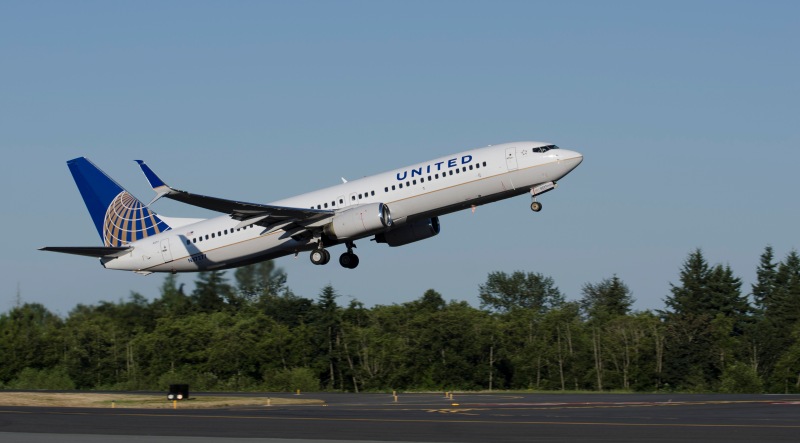A few weeks ago, I enthused about United putting a new style of winglet on the end of its Boeing 737-900ER’s – the Split Scimitar Winglet provided by Aviation Partners Boeing.
Well it seems things have progressed forward, and the first plane with a pair of Split Scimitar wingtip devices has taken to the air:
United Airlines Boeing 737-800 with the Split Scimitar winglet in flight – Image – United Airlines
The Split Scimitar winglet cap in detail – Image – United Airlines
The first aircraft completed its maiden flight successfully with the new device installed, and you’ve got to admit – looks quite nice in flight.
For United and Aviation Parters Boeing, this begins the long process of getting validation and clearance of the design cleared by the FAA for retrofitting to Boeing 737-800’s and Boeing 737-900ER’s – as well as pre-validating the design for the upcoming 737 MAX series.
The refit is due to commence in 2014.
The benefits for the United – and other airlines who are looking at this wingtip device is simple: reducing fuel costs. It is estimated that this will result in 1.8% in fuel savings.
Whilst that doesn’t sound a lot, we have to examine the effects of scale and power – this device will fly many times in its life, and will be installed on many aircraft. United estimates with the winglets and wingtips installed on its 737, 757 and 767 fleet, this could be US $200 Million a year.
And that’s a hefty chunk of change, no matter how you look at that which can be used to drive up profits, reduce fares and create a buffer against future fuel cost rises.
Hopefully, the validation of these wingtip devices comes safely and quickly for all parties, so that more airlines can introduce this Split Scimitar, and get airlines saving money on one of the biggest costs they have – fuel.
And airlines are all too happy to pass the cost of fuel onto us – the customer. Anything that saves money is always welcome…

